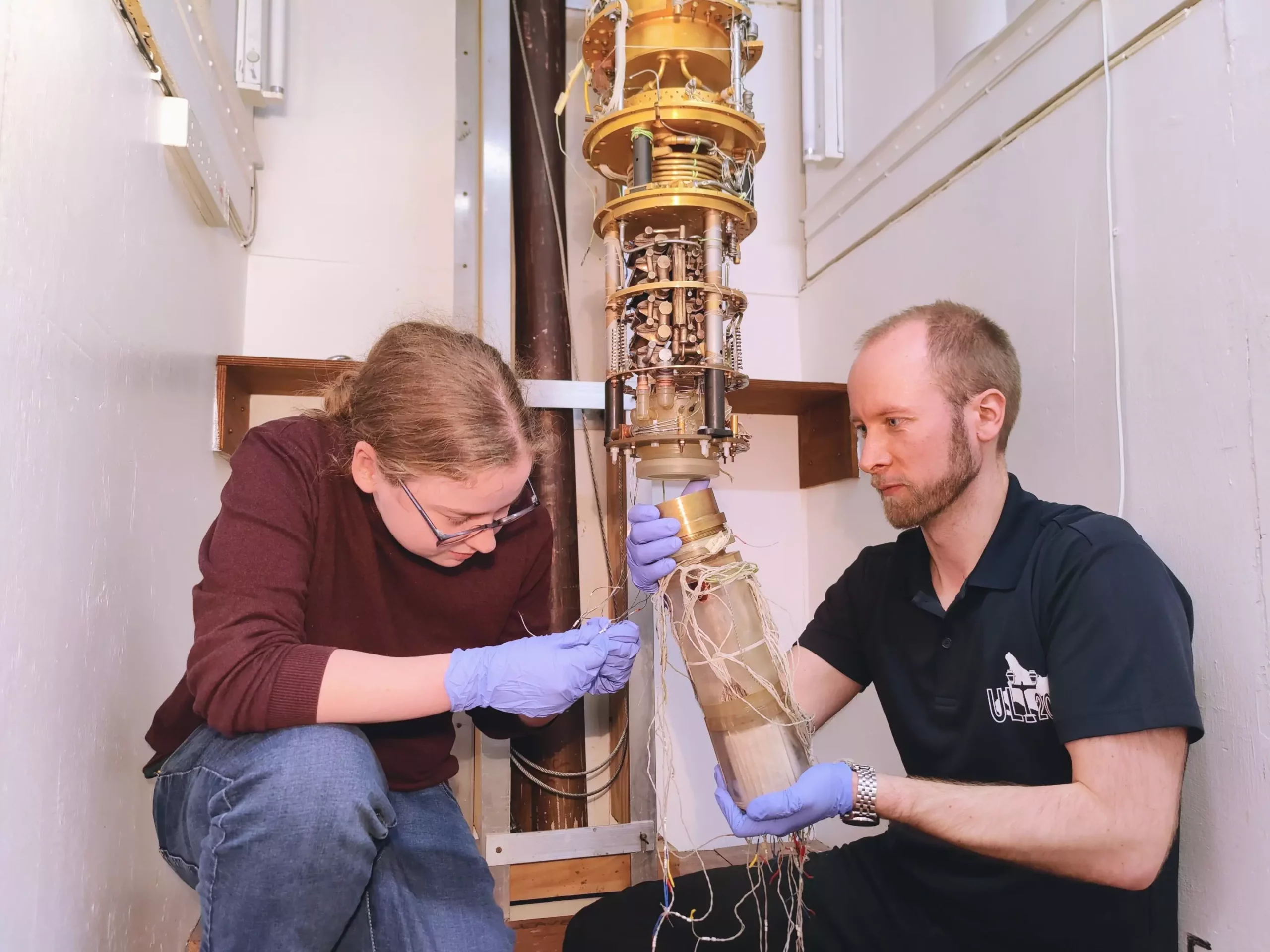One of the most profound mysteries of science revolves around the elusive nature of dark matter, comprising approximately 80% of the matter in the universe. Despite its invisible nature, the gravitational effects of dark matter can be detected, prompting scientists to develop cutting-edge technologies to unveil its secrets.
A groundbreaking collaboration between researchers at Lancaster University, the University of Oxford, and Royal Holloway, University of London, has led to the development of highly sensitive dark matter detectors. Through advanced quantum technologies, these scientists are at the forefront of unraveling the mysteries of the universe.
Dr. Michael Thompson, Professor Edward Laird, Dr. Dmitry Zmeev, and Dr. Samuli Autti from Lancaster, Professor Jocelyn Monroe from Oxford, and Professor Andrew Casey from RHUL are spearheading this innovative research endeavor. By harnessing quantum technologies at ultra-low temperatures, they aim to construct the most sensitive detectors to date.
Particle physics theory posits two likely dark matter candidates: new particles with ultra-weak interactions and axions, which are incredibly lightweight wave-like particles. The research team is constructing two experiments to search for each candidate, with a focus on detecting collisions with ordinary matter.
While most existing experiments are designed to detect dark matter particles within a specific mass range, there is a possibility that lighter candidates have gone unnoticed. The Quantum Enhanced Superfluid Technologies for Dark Matter and Cosmology (QUEST-DMC) team is striving to achieve world-leading sensitivity in detecting dark matter candidates with masses as light as a few hydrogen atoms.
In contrast to new particles, axions are extremely light and abundant in nature. While direct collisions with axions may not be detectable, researchers can search for unique electrical signals generated when axions decay in a magnetic field. The Quantum Sensors for the Hidden Sector (QSHS) team is pioneering new quantum amplifiers to detect these elusive signals.
In an effort to bridge the gap between scientific research and public understanding, the researchers are showcasing their work at the Royal Society’s Summer Science Exhibition. Through interactive exhibits, visitors can explore the concepts of dark matter and quantum technologies. From gyroscopes to marbles illustrating invisible masses, the exhibition offers a hands-on experience for all ages.
The quest to understand dark matter through quantum technologies represents a pivotal moment in scientific exploration. By pushing the boundaries of our knowledge and technological capabilities, researchers are on the cusp of shedding light on one of the greatest enigmas of the universe. As we delve deeper into the realm of the unseen, the mysteries of dark matter may finally come to light.


Leave a Reply